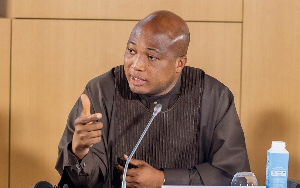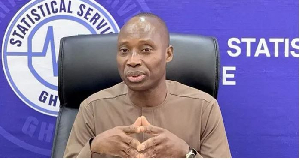Eager to repair his battered image from his recent foray into tribe-and-blood politics, NPP presidential candidate Nana Akuffo-Addo has swung back on message with a bold and provocative call to ‘transform’ Ghana in 10 years.
“What we need,” Mr. Akuffo-Addo is reported as saying, “is a structural transformation of [Ghana’s] economy. “
A nation’s broader developmental transformation of course involves pronounced and positive changes not just in its economy but also its society and polity.
Akuffo-Addo seems to emphasize the economic, with vague allusions to the social, and we are told that he has a team of experts working out the details to be shared with the public soon.
We wait patiently for the revealed truth from this chosen few. In the interim, however, we take the liberty to reflect on past and other attempts at socio-economic transformation and the lessons thereof.
Kwame Nkrumah's 7-Year Development (7YDP) was without doubt the most comprehensive framework for social and economic transformation since independence, besides the Vision 2020 plan of the 1990s.
In presenting the 7YDP to Parliament on March 16, 1964, Nkrumah cast it as part of a long-term vision to “eradicate completely the colonial structure of our economy”. The foundation for such eradication had been laid in the preceding years.
By 1960, three years after independence, he had raised Ghana’s gross capital formation as a share of GDP (a measure of the economy’s productive and transformative capacity) to 24.4%, among the highest in the world then. South Korea's was 11.5%.
Despite the collapse of cocoa prices in 1964-65, economic growth remained positive and Ghanaians enjoyed one of the highest standards of living in the world. At US$210, Ghana’s per capita income in 1964 was 60% higher than South Korea’s.
The subsequent deterioration in Ghana’s socio-economic fortunes, and with that the reversal of the positive structural transformation initiated by Nkrumah, began immediately after the 1966 coup.
In 1966, the economy shrank by 4.3%, the first negative growth since independence, as the country’s productive base was decimated by the coup makers. In the social realm, policies in education, health and affordable housing that had brought a measure of equity into Ghanaian society were scrapped or scaled back in a fanatical effort to purge the country of what was described as “socialism” (mark this word, for we shall see it again).
By 1970, Ghana’s gross capital formation as a share of GDP had declined to 14.1% while South Korea’s had risen to 25.5%. By 1983, when Ghana launched its economic recovery program to redeem itself from years of economic mismanagement and social decay, the figure had dropped further to 3.7% while South Korea’s had shot up to 30.0%. Korea thrived as Ghana withered.
Nearly three decades of recovery, adjustment, and reform have helped reclaim some of the lost ground, but such was the depths into which Ghana had sunk that the gap between accomplishment and potential remains disturbingly large - though instructive.
For example, if Ghana had stayed in lock-step ahead of South Korea, its per capita income in 2009 would have been about US$32,000, instead of the measly US$1,556.00 reported by the Ghana Statistical Service. This would have easily made Ghana a high-income country, the ultimate measure of a successful transformation.
Aspects of structural transformation can of course be attained in 10 years or less, but most of it – especially the social aspects requiring not just massive investments but also inter-generational changes in institutions, attitudes and values –will take a lot more than 10 years, even with the advantages of modern technology to quicken the process. Political transformation can be even messier.
In Brazil, which Nana Addo has adopted as a model with scant regard for its history and strategies, broad-based economic growth led the national transformation over a 70-year period, accompanied by a fitful process of political modernization that alternated between rowdy multiparty democracy and repressive military regimes. The recent succeses in Brazilian social policy that seem to have impressed Nana Addo occurred under Lula da Silva, who was elected in 2002, and was the culmination of decades of social engineering; it was not an overnight miracle.
Replicating Brazil in Ghana over any timeframe, therefore, will need more than loud proclamations of visionary leadership. It will require, at the minimum, a technically sound plan, with broad political legitimacy, that provides a national sense of ownership, purpose, direction and of course hope – with none of the bile that today poisons political, social and economic life in Ghana. After the partisan rejection of Vision 2020 in 2001, it remains to be seen how Nana and his team would cobble together another plan across political lines with the legitimacy of a national consensus.
And then there's the issue of strategy and ideology.
The recent steep fall in poverty in Brazil (where inequality remains persistently high and with that high crime rates) was largely due to direct state interventions (such as conditional cash transfers to poor families), which some of Nana Addo’s ideological allies are certain to consider “socialist” (does the word sound familiar?) Indeed, shortly after his election, Lula described his party as a “mass left wing socialist party”.
It would be interesting to see how purported anti-socialists in Ghana will import socialist policies and strategies from elsewhere for a 10-year wonder plan without seeming two-faced and opportunistic. Kwame Nkrumah will surely be watching from high above.
But a more immediate and greater challenge for Nana Addo’s team is how to reconcile their most recent record of regressive transformation with what they now presume would be a progressive transformation when in fact it may not.
Consider the following: The percentage of trained teachers in primary schools fell from 79.8% in 2000/2001 to 59.4% in 2007/2008; combined gross enrolment ratio fell from 62.3 in 1999 to 57.6 in 2006; the measure of inequality (the Gini coefficient) increased from 38.8% to 39.4%; life expectancy at birth fell from 63.1 years in 1999 to 58.5 years in 2006; Ghana’s Human Development Index went down from 0.553 in 1999 to 0.540 in 2006; exports as a share of GDP fell from 38.9% in 2000 to 28.6% in 2007; over the same period, agriculture’s share of bank credit declined from 9.7% to 4.5%; manufacturing’s share fell from 28.3% to 12.9%. The list goes on and on.
If ever there was a classic case of moving a country forward in reverse, this was it.
But Akuffo-Addo's “experts” may well allay our fears yet. We wait patiently. Postscript: The ‘Guggisberg economy’, a term being used disparangingly by Nana Addo’s team, provided the following for Ghana in seven years: Korle Bu Hospital, Takoradi Harbor, Achimota College, a rail link from Akim Tafo to Kumasi, and 3,380 miles of new roads (compared to the 260 miles of all the previous colonial years combined). In a speech to the legislative council in 1920, Guggisberg proposed the diversification of the Gold Coast economy as well as the addition of value to palm fruits for exports through modern processing; that was over 80 years before President Kufuor’s “special initiative on palm oil”. (Nkrumah continued 20 years later where Guggisberg left off only to be cut down in 1966 by forces of reaction). Indeed, the first 'great leap' to transform Ghana’s economy and society occurred under Guggisberg’s 1920-1930 development plan. His insights and foresight from that period remain useful and timeless lessons for anyone interested in Ghana’s development. Ridicule, therefore, must give way to the humility to learn from Guggisberg – and of course Nkrumah, the two men with the greatest monuments to transformational leadership in Ghana.
Credit: Nii Moi Thompson
Opinions of Tuesday, 22 March 2011
Columnist: Thompson, Nii-Moi














